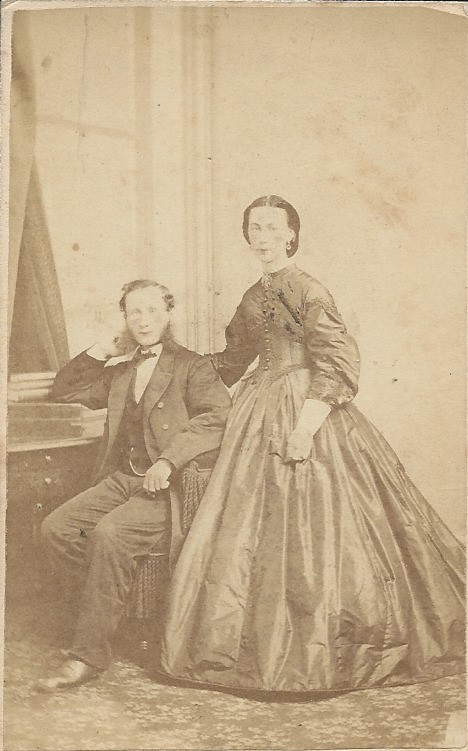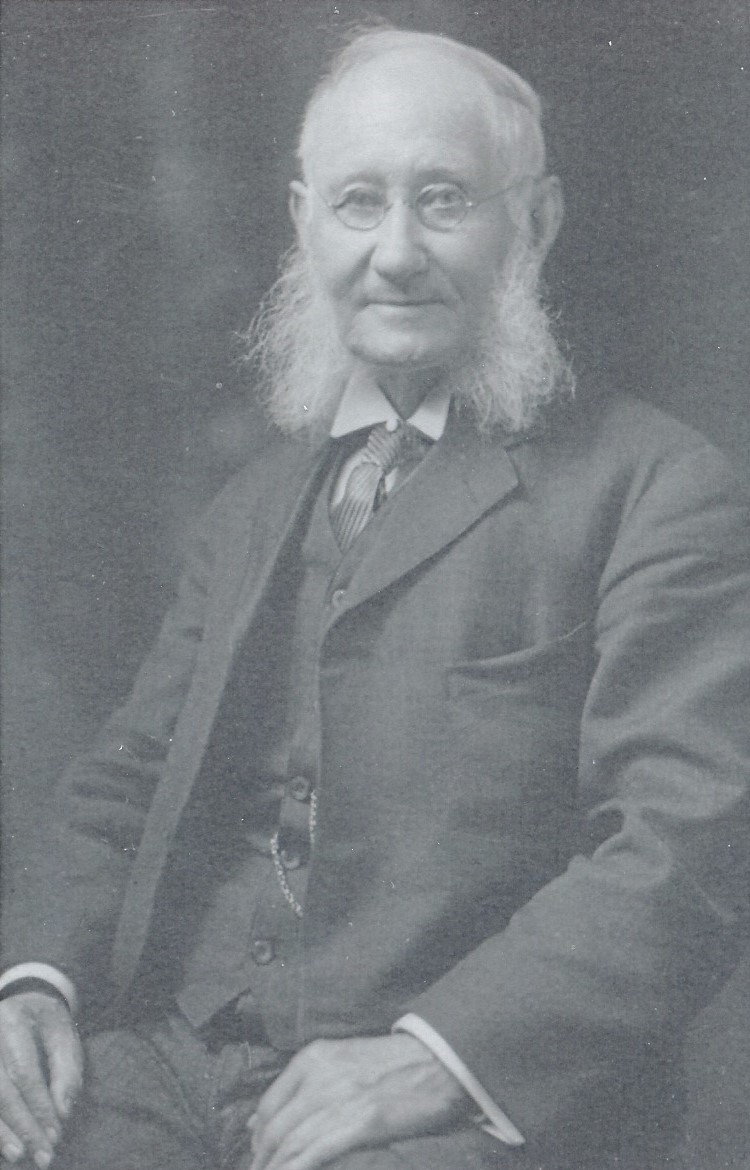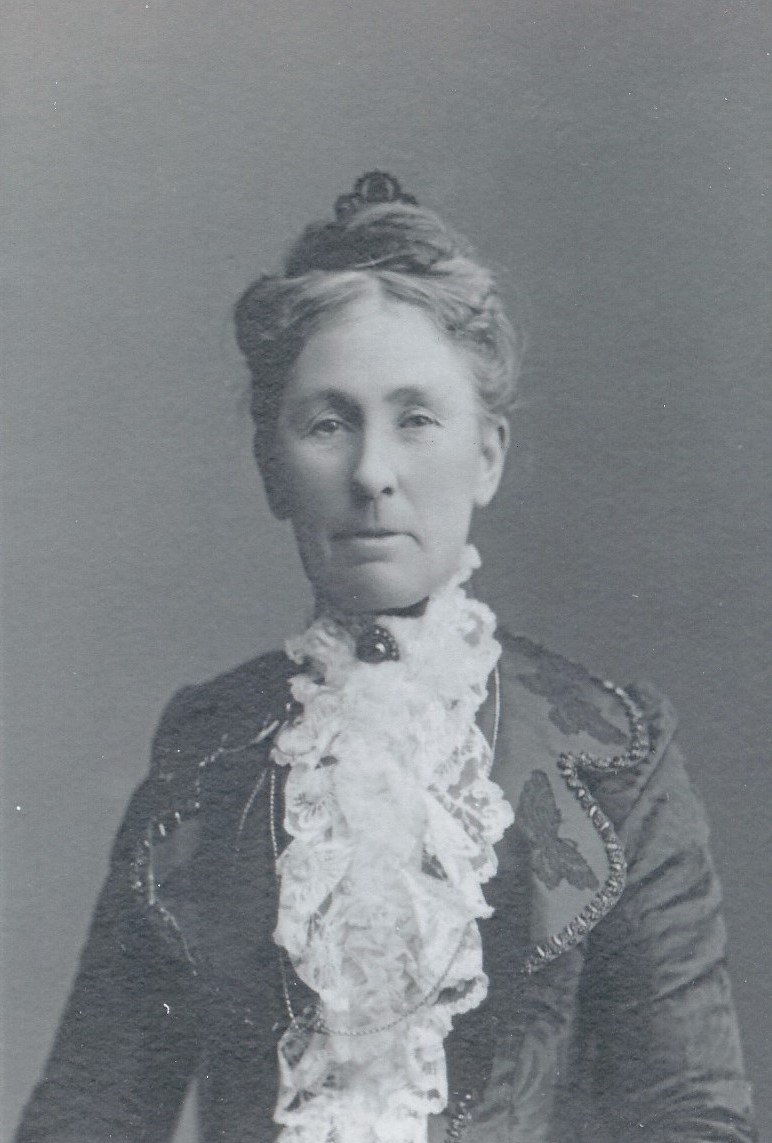Shivaun's Family Tree Website

![]() Fraser family
Fraser family
![]()
* * *




Part 3: Alexander Fraser (1835 - 1921)
Early life and emigration to Canada
Alexander Fraser was the younger of twin boys born to Hugh Fraser Jr and Jessie Robertson. He was born 14 May 1835 in Boleskine, Inverness-shire, Scotland and grew up in Aberchalder, a small settlement alongside the Caledonian Canal. About 1854, when he was 19, he emigrated to Montreal, Canada. It is not known why he emigrated: there was no particular economic or social drivers at that time (the infamous Highland Clearances where people were evicted from the land had largely ended by this time). His mother had died the preceding year, his twin brother Hugh had most likely left home to pursue his theological studies, he had no younger siblings dependant on him and his father still worked as a bridge keeper. Alexander had no ties or responsibilities to keep him in Aberchalder and perhaps he was keen for adventure. He might well have seen the regular advertisements in 'The Inverness Courier' for passenger ships sailing from Greenock to Quebec and Montreal.
According to a newspaper article about his retirement from the Grand Trunk Railway (GTR), Alexander started working for the company in 1854 as a clerk in Longueuil, across the St Lawrence River from Montreal. [1] The company had only come into existence two years earlier to build a railway from Toronto to Montreal. [2] Apparently when he joined, the track was only 290 miles long and did not yet reach Toronto! In 1859 he became a freight agent at the Montreal wharf. At the end of that same year the Victoria Bridge was opened which allowed the freight to travel over the St Lawrence River by train - prior to that Alexander dealt with freight via boats. He worked out of Pointe St Charles Parish where GTR built a rail yard and many of its employees lived.
Marriage to Agnes Stewart
Alexander married Agnes Stewart (1843 - 1928) 02 October 1860 at St Matthew's Presbyterian Church, Pointe St Charles. The Church of Scotland building had only been completed earlier that year and formal worship started there from April. [3]
Agnes was the eldest daughter of master boot and shoemaker Alexander Stewart and Isabella Strachan. She and her five siblings had been born in Edinburgh, Scotland. After the death of Isabella, the family emigrated to Quebec c1857. They settled in Richmond, a town east of Montreal which was an important railway junction between Montreal and Quebec City. How Agnes and Alexander met is not known but it might have been because of Richmond's importance to GTR.
Agnes was only 17 (a 'minor') when they married so she required her father's consent to marry as she was under 21 (oddly enough he was not listed as a witness but Agnes' 15 year old sister Helen was!). As the marriage was neither Roman Catholic nor Church of England a license was required. Alexander and Agnes went on to have eight children: Hugh, Mary Alice, Isabella, Agnes Gertrude, Alexander Stewart, Sydney Robertson and Clarence Lorne.
Family life
In the autumn of 1864, the family moved to Lévis, across the St Lawrence River from Quebec City where Alexander had been appointed as freight agent and district cashier. In 1873 he became a travelling auditor and the family moved to Toronto, Ontario, and by 1879 had settled in Etobicoke Township, on the western side of Toronto, which had a population of less than 3000. They had a farm on Scarlet Road, Weston, which was 64 acres in size by the time of Agnes' death, and it was known as 'Braemar', after the location of the Highland Games Gathering in Aberdeenshire. Alexander travelled up and down auditing the train station accounts and in 1891 also took on the duties of paymaster. In 1908, after 54 years of service, this "veteran railway man" retired with a glowing account in 'The Globe and Mail' describing him as "none more beloved or more generally respected as he".
Alexander died 11 June 1921 at his home, aged 86, and was buried two days later in Riverside Cemetery. Agnes continued to live in the farm with her unmarried children. She was very active with her local church but later suffered from chronic bronchitis. She died at home 12 May 1928, aged 84, and was buried two days later with her husband.
The family's move from Quebec to Ontario coincided with the passing of the latter's Married Women's Property Act (1874). If they had continued living in Quebec, Agnes and her married daughters would have had no control over their money and property - anything they earned or owned their husbands would have legal control over. If the husband left no will, property generally went to the eldest son. It was ninety years before Quebec had the same legislation. Agnes' will stipulated her property was to be divided equally amongst her children but first her unmarried daughters were to have the right to call Braemar home for as long as they wanted to.

Alexander and Agnes in early married life

Alexander Fraser, date unknown

Agnes Fraser, née Stewart, date unknown
Children of Alexander and Agnes
Hugh (1861 - 1861) was born 03 July 1861 in Pointe St Charles Parish, Montreal. He was baptised 18 August at St Paul's Presbyterian Church. Sadly he died 29 September the same year. It is not known what caused his death. He was buried 01 October at the Congregational Burying Ground in Melbourne, near Richmond.
Mary Alice (1862 - 1941) was born 24 October 1862 in Montreal. She was baptised 30 November the same year at St Matthew's Presbyterian Church, Pointe St Charles Parish (although the baptism record gives the date as the 'thirty first' of November!). She had some education but it is not known how much. Ontario's School Act (1871) introduced compulsory schooling up to the age of 12 which was free for those attending a secular public school (as opposed to the fees private schools could charge). The Act also saw the emergence of distinct secondary schools which now required passing an entrance exam to attend. Mary might have attended secondary school. It is possible she never had paid employment afterwards and helped with home duties. She lived with her parents until their deaths and afterwards she seemed to have lived with her widowed sister Isabella. Mary died 02 February 1941 in Connaught Crescent, Weston, aged 78. She was buried 05 February with her parents in Riverside Cemetery.
More information about Jessie Amelia (1864 - 1943) appears in Part 4.
Isabella (1866 - 1946) was born 23 September 1866 in Lévis, Quebec, and baptised in the Lévis Church of Scotland 25 October the same year. She was known variously as 'Bella' and 'Isabell'. It is not known if she had any paid employment when she was younger but she became a schoolteacher when she was in her 30s. This was unusual as most women became teachers in their late teens (it was one of the few professions available but they had to stop when they married). Isabella's younger sister also became a teacher around the same time. At the turn of the 20th century, teaching had become more professional in Ontario: would-be teachers had to pass an entrance exam (the results were posted in newspapers such as 'The Globe and Mail' - although no results have been found so far for the Fraser sisters). They had to be at least 18 years old, physically fit and provide a 'certificate of moral character'. Those who wanted to be high school teachers or 'First Class' public school teachers were trained in a Faculty of Education at university, rather than through the previous system of teacher training at a 'Normal School'. Their training involved teaching at least twenty lessons and observing thirty lessons in the space of a term. [4]
Both Isabella and Agnes moved to Fort William (now part of Thunder Bay) to teach. Fort William was rapidly expanding at the start of the 20th century and there was a big demand for teachers in the western provinces and the rural parts of Ontario. Some teachers preferred taking a lower salary just to remain in urban areas. It is not known where Isabella taught. In 1921 shea was lodging at 228 South Brodie Street, Fort William (the house is no longer there - a library has since been built in the area). Isabella married very late in life, when she was 60. Her husband was James Gowanlock (1850 - 1929), a contractor who had previously been a millwright. James had been twice widowed (Esther Morrow, c1848 - 1893 and Janet Walkington, c1862 - 1920) and had four children: Hannah, Stewart, Morella and Jean. James and his family had moved to Neebing, Fort William from the Toronto area by 1901. He and Isabella married 30 April 1927 in an apparently 'quiet evening wedding' from her brother Lorne's house (likely Braemar). Her brother Alex came up from Buffalo, New York for the wedding. Isabella and James continued to live in Fort William but sadly James died only two years later, 16 March 1929. He had been suffering from uraemia and stomach cancer but died of apoplexy en route to a hospital. He was buried three days later in Fort William. It is very likely Isabella returned to Weston to live with her unmarried sisters Mary and Agnes after this. Sadly Mary died in 1941 and then Agnes in June 1946. Just a few months later, Isabella died 06 September 1946 at Connaught Crescent, Weston, aged 79, after suffering from heart disease for five years. She was buried three days later in Riverside Cemetery.
Agnes Gertrude (1868 - 1946) was born 07 August 1868 in Lévis, Quebec, and baptised in the Lévis Church of Scotland 08 December the same year. Like her older sister Isabella, she became a teacher later in life and taught in Fort William. However it seems she gave up her career earlier and returned to live with her parents in Weston. Later it seems she lived with Isabella and their older sister Mary in Connaught Crescent, Etobicoke Township. She died in her home 23 June 1946, aged 77, after suffering from heart disease. She was buried two days later in Riverside Cemetery.
Alexander Stewart (1871 - 1953) was born 12 April 1871 in Lévis, Quebec, and baptised in the Lévis Church of Scotland 22 June of the same year. 'Alex' (as he was known as) worked as a clerk for the Grand Trunk Railway (GTR) company, like his father did before him. He married Jane Scott MacWilliam (1872 - 1917), the daughter of a Free Church reverend, 06 August 1898. Two years later the couple emigrated across Lake Ontario to live in Buffalo, New York. The GTR had acquired the Buffalo and Lake Huron Railway many years earlier and Alex worked as a cashier and then freight agent for GTR. After Jane's father's death her mother came to live with them. Alex and Jane never had any children and sadly Jane died of cardiac dilatation 03 August 1917, aged 45. Alex arranged for her to be buried in the MacWilliam family plot in Mount Pleasant Cemetery, Toronto, where her father had been buried a decade earlier. It seems Jane's mother continued to live with her son-in-law until her death in 1919. Alex married Jennie A (c1883 - 1941) 31 March 1920 in Buffalo. Jennie was the widow of Winthrop Tweedy but it is not known what her maiden name was. She and Winthrop had a daughter Jane Hadley. By 1930 Alex had become a naturalised American citizen. Jennie died 17 November 1941, aged 58, and was buried in Forest Lawn Cemetery, Buffalo. Alex died 26 September 1953, aged 82, and was buried in Forest Lawn Cemetery.
Sydney Robertson (1875 - 1939) was born 19 June 1875 in Ontario. It is not know where he was baptised. He married Mary Louisa Waltham 15 May 1901 in Toronto. They had two children: Stanley Waltham and Marion Stewart. Sydney died 08 August 1939, aged 64, from acute poisoning, which a coroner ruled as suicide. Sydney was buried 10 August in Riverside Cemetery.
Clarence Lorne (1879 - 1922) was born 10 September 1879 in Etobicoke Township, Ontario. It is not known where he was baptised. He was known as 'Lorne' and worked as a barrister. He married schoolteacher Donalda McKechnie 14 August 1923 at the bride's home. Lorne's older sister Jessie's brother-in-law Norman Raney was the best man and Lorne's niece Marion played Mendelssohn's Wedding March. Lorne and Donald had two daughters: Lorna and Alicia. Lorne died 22 July 1922. [5]
Next: Jessie Amelia Fraser
Footnotes
[1] 'The Globe' 16 May 1908, p35.
[2] 'Grand Trunk Railway of Canada' by James H Marsh, 07 Feb 2006, The Canadian Encyclopedia [https://www.thecanadianencyclopedia.ca/en/article/grand-trunk-railway-of-canada]
[3] St Matthew's Presbyterian Church webpage [http://www.quebecgenweb.com/~qcmtl-w/StMatthew.html]
[4] 'The Ontario Teacher, 1800 - 1910' by J.G. Althouse, Ontario Teacher's Federation (1967)
[5] Old Parish Records pre 1855: Births & Baptisms, Marriages & Proclamations of Banns. Deaths & Burials, Statutory Registers of Births, Marriages and Deaths 1855-2006, Scotland Census 1841, 1851, 1861, 1871, 1881. 1891, 1901 (www.scotlandspeople.gov.uk); Canada Census 1851, 1861, 1871, 1881, 1891, 1901, 1911, 1921, Ontario death records, Quebec baptism, marriage and burial records, various family trees (Ancestry.co.uk); British Newspaper Archive (findmypast.co.uk); Globe and Mail Historical Newspaper Archive; Wikipedia










